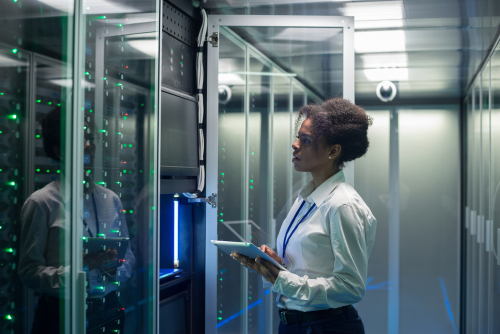via BizTech Magazine
Organizations have been running critical applications on mainframe computers for decades. Some have sought to migrate these workloads to the cloud or other platforms, but in many cases, they have determined that maintaining mainframe operations is their best course of action.
Organizations in a variety of industries, including retail, government and financial services, continue to rely on mainframes to run important workloads.
The bottom line: Many mainframes aren’t going anywhere. In fact, a 2022 report from Deloitte notes that 75 percent of business and IT executives say mainframes have long-term viability. Rather than migrating mainframe operations to new platforms, organizations are looking to modernize them, enabling access to new capabilities while maintaining operation of essential workloads.
“For many organizations, there’s no other platform that can give them what they need with regard to transaction performance, reliability and security,” says Peter Rutten, research vice president at IDC. “But then, they also want to modernize and make the mainframe more integrated with the rest of their data center and with the cloud.”
A Nuanced Approach to Modernization
As organizations consider the future of their mainframe systems, they must think strategically. Their computing platforms must support their business needs. Further, as IT and business leaders plan for the future, they must be able to map a course from their current IT systems to their future goals.
Brent Ellis, senior analyst at Forrester, says the pendulum has swung away from the idea that organizations should move their mainframe resources completely to the public cloud. Instead, he says, IT leaders must carefully decide which applications to rewrite, which to re-platform and which to leave as they are. “People are realizing that they have to have a more nuanced approach to mainframe modernization,” he says.
Security remains a critical challenge for organizations looking to modernize their IT operations. Cybercriminals are more organized and sophisticated than ever, and dealing with their attacks represents a priority for organizations across industries.
Ransomware has emerged as a top threat over the past decade, but IT leaders also need to address numerous other security risks, including phishing and insider threats. New security tools and strategies can help organizations meet the challenge.
“Every day, there’s a new security challenge,” Rutten says. “The first thing that you need to do if you’re on a mainframe and you’re concerned about security is to make sure that you’re up to date with your mainframe generation.”
For example, Rutten notes, IBM introduced pervasive encryption, which encrypts all data both at rest and in transit, on its z14 mainframe generation. The z16 line, which debuted last year, introduced the industry’s first quantum-safe solution, which can protect data from compromise even after quantum computing becomes available to crack “traditional” cryptography — a development that Rutten expects to see in the next five years.
“If you’re still running two or three generations behind, then you might be exposed more than you want to be,” he says.
For many organizations, there’s no other platform that can give them what they need with regard to transaction performance, reliability and security.”
The Benefits of a Modernized Mainframe
Many of the organizations that adopted mainframes decades ago had large batches of computation they needed done in a limited time. In addition to finance, retail and government organizations, this included airlines that needed to print tickets for thousands of customers, as well as logistics companies and large universities.
“In many cases, they adopted the technology when the only platform available to them was mainframe, and they built out a lot of resources on top of it,” Ellis says. “For those enterprises, there are a lot of different choices for how they deliver technology to their customers going forward.”
One modernization approach is to adopt a new mainframe solution that can operate in place of older technology and provide new capabilities. Another option is to build out a hybrid environment that combines new hardware along with cloud services, which can help IT teams and lines of business take advantage of emerging tools such as artificial intelligence while maintaining legacy workloads.
Adopters of modernized mainframe solutions also can see significant improvements in data center efficiency, due to a reduced real estate footprint as well as lower energy usage.
The Challenge of Maintaining Mainframe Support
Mainframes will continue to be important building blocks for many organizations, but some IT leaders find it increasingly difficult to hire employees who have the specialized skills needed to manage them.
While attracting talent with mainframe experience remains a challenge, Ellis says there are now more resources available than just several years ago. “IBM and others have increased funding for mainframe education, and you also see a lot of COBOL boot camps that have sprung up. The real issue is the experience gap between retiring professionals and the new generation replacing them.”
Rutten says many companies may need outside services to stand up and maintain their mainframes, but he cautions organizations to work only with trusted partners that will provide objective advice. “Some consultants have an agenda to get you off the mainframe, no matter what,” he says. “But the best service providers can help you streamline your mainframe operations while also expanding your cloud-based operations. That’s what you want: a very pragmatic approach.”

